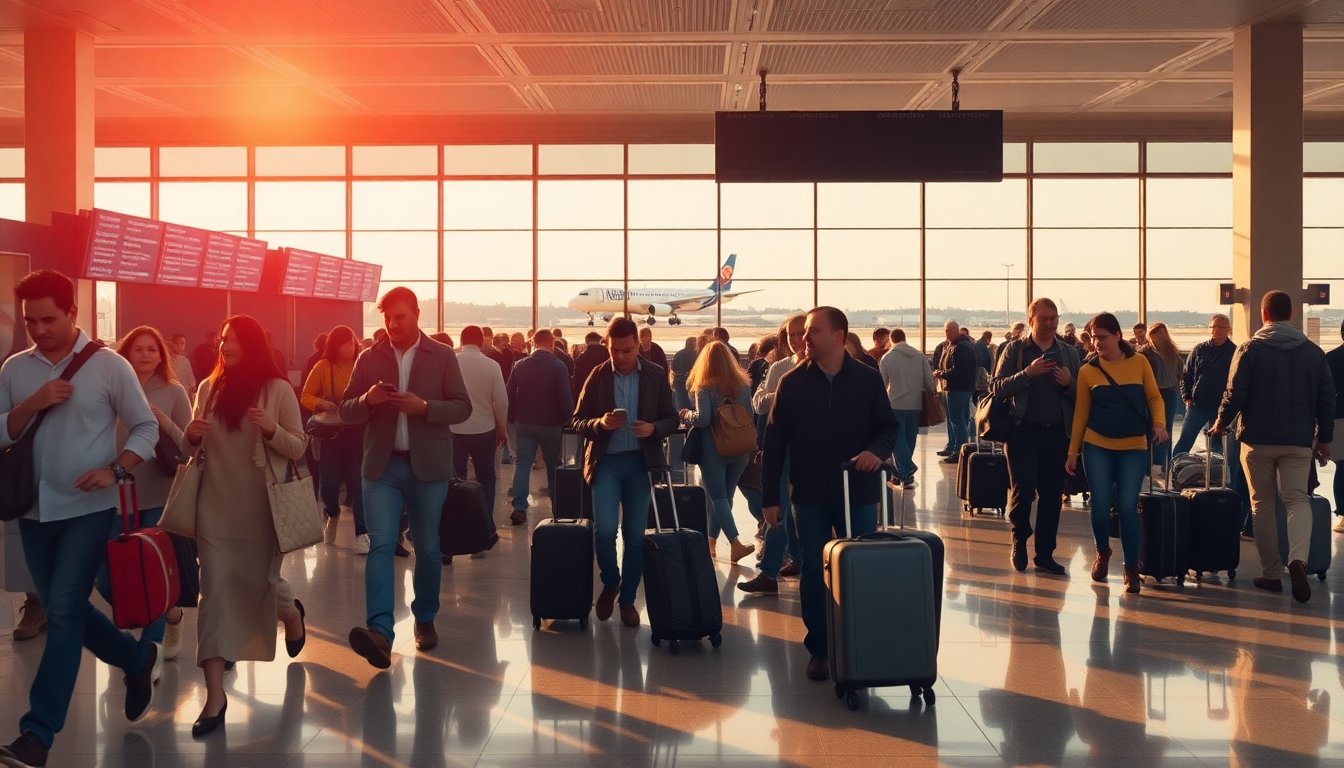Table of Contents
The Federal Aviation Administration (FAA) has announced a significant reduction in air traffic, implementing a 10% cut across 40 of the busiest airports in the United States. This decision comes in response to the ongoing federal government shutdown, which has resulted in many air traffic controllers working without pay, leading to substantial staffing shortages.
As the shutdown continues into its 36th day, the FAA is taking proactive measures to ensure the safety of air travel. FAA Administrator Bryan Bedford emphasized the urgency of the situation, stating, “We can’t ignore it,” underscoring the need for immediate action to alleviate the pressures on air traffic control.
Impact of the shutdown on air traffic control
The ongoing government shutdown has compelled approximately 13,000 air traffic controllers and around 50,000 Transportation Security Administration (TSA) officers to perform their duties without pay. This situation has led to increased absenteeism among controllers, with reports suggesting that between 20% and 40% of the workforce at the nation’s largest airports are failing to report for duty.
Transportation Secretary Sean Duffy warned that if the shutdown persists, it could require further drastic measures, potentially resulting in the closure of specific airspace regions. Such developments could disrupt the entire aviation industry and prompt airlines to express concerns regarding safety risks associated with the prolonged government impasse.
Reduction in flight capacity
The Federal Aviation Administration’s (FAA) decision to reduce flight capacity marks an unprecedented move aimed at ensuring safety in the nation’s airspace. This initiative will take effect on Friday and seeks to address staffing shortages that may affect flight operations.
The reduction could result in thousands of flights being canceled daily, significantly impacting millions of travelers.
FAA Administrator Billy Bedford stated that the cuts will be evenly distributed among airlines, considering their current schedules and operational patterns. “Our mission is to keep airspace as safe as possible,” Bedford emphasized, pointing out that these measures are informed by data and anticipated staffing challenges.
Consequences for airlines and passengers
The aviation industry is facing significant challenges as new limitations take effect. Major airlines, including United Airlines and American Airlines, have reported declines in stock prices, raising concerns among investors about potential operational disruptions. Since the government shutdown began on October 1, more than 3.2 million passengers have experienced delays and cancellations.
On one notably difficult day, over 5,000 flights were delayed, highlighting the pressure on the system. Travelers encountered long lines at security checkpoints and unexpected flight cancellations. The Federal Aviation Administration (FAA) has cautioned that if conditions worsen, additional restrictions could be implemented, potentially creating a ripple effect throughout the airline industry.
Industry response and future outlook
Airlines express concerns over FAA capacity reduction mandate
Airlines for America, a prominent trade association representing major U.S. airlines, has voiced its concerns regarding the Federal Aviation Administration’s (FAA) recent capacity reduction mandate. The association is actively working with federal officials to address the challenges posed by these new operational constraints. Their primary goal is to minimize the impact on passengers and maintain flight schedules as much as possible.
Although industry leaders report that the shutdown has not yet had a significant impact on their operations, they warn that ongoing uncertainty could result in decreased future bookings. As the shutdown continues, travelers may encounter additional difficulties, such as potential flight cancellations and longer wait times at airports.
The FAA’s decision to cut flight capacity aims to enhance air travel safety amid significant staffing shortages. As conditions change, airlines and passengers will need to adjust to the shifting landscape of the aviation industry, which is currently affected by the government shutdown.





